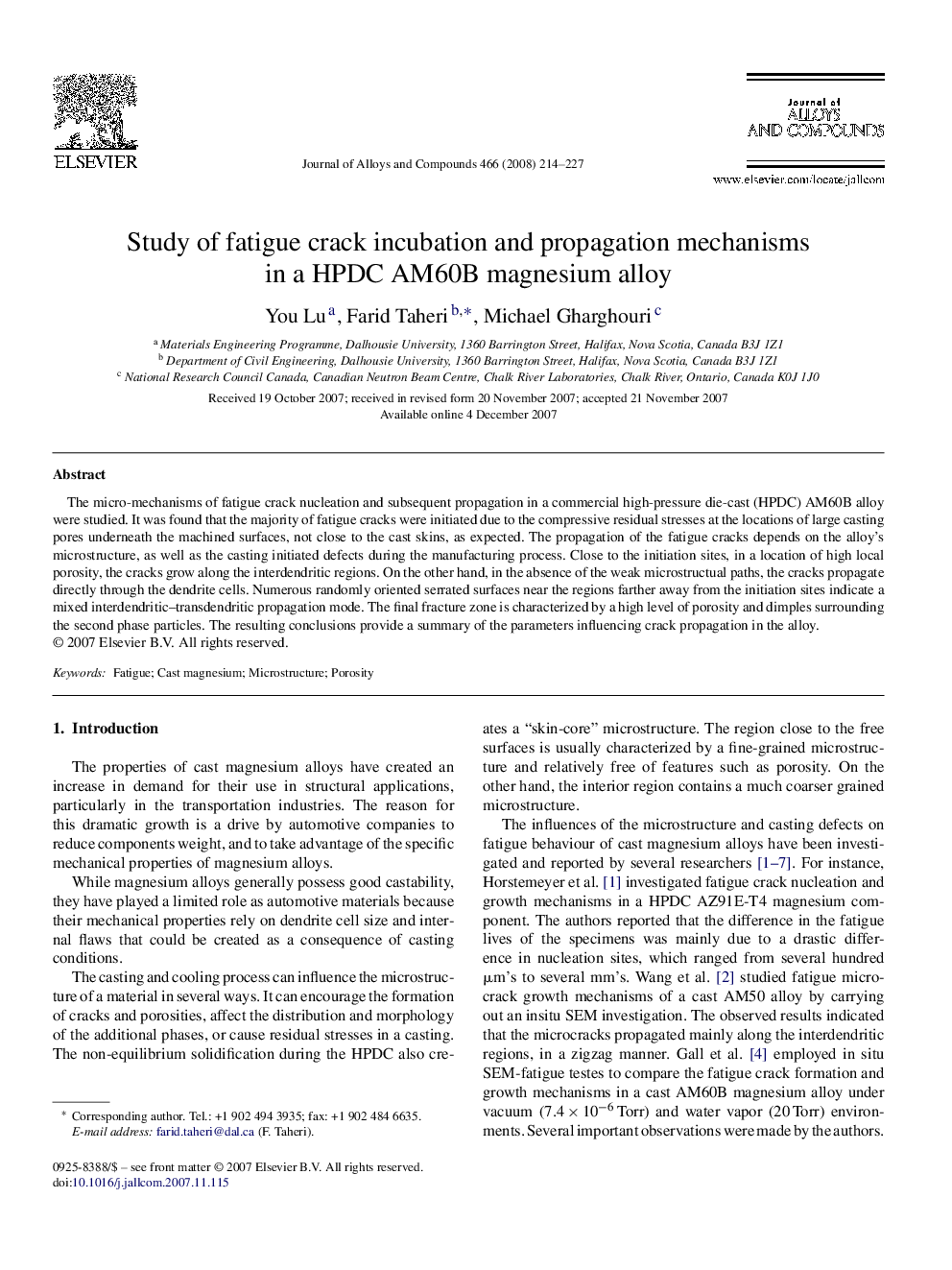| Article ID | Journal | Published Year | Pages | File Type |
|---|---|---|---|---|
| 1623566 | Journal of Alloys and Compounds | 2008 | 14 Pages |
The micro-mechanisms of fatigue crack nucleation and subsequent propagation in a commercial high-pressure die-cast (HPDC) AM60B alloy were studied. It was found that the majority of fatigue cracks were initiated due to the compressive residual stresses at the locations of large casting pores underneath the machined surfaces, not close to the cast skins, as expected. The propagation of the fatigue cracks depends on the alloy's microstructure, as well as the casting initiated defects during the manufacturing process. Close to the initiation sites, in a location of high local porosity, the cracks grow along the interdendritic regions. On the other hand, in the absence of the weak microstructual paths, the cracks propagate directly through the dendrite cells. Numerous randomly oriented serrated surfaces near the regions farther away from the initiation sites indicate a mixed interdendritic–transdendritic propagation mode. The final fracture zone is characterized by a high level of porosity and dimples surrounding the second phase particles. The resulting conclusions provide a summary of the parameters influencing crack propagation in the alloy.
